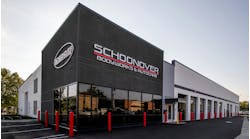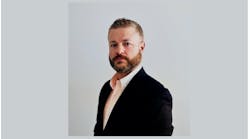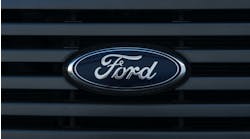Aug. 29, 2017—The Society of Collision Repair Specialists (SCRS) announces session details outlining the content of the upcoming OEM Collision Repair Technology Summit at the 2017 SEMA Show.
The summit, held on Thursday, Nov. 2, was first launched by SCRS four years ago to put SEMA attendees in a room with innovators in automotive structural design and technology that can create context around sophisticated advancements in vehicles and emerging technology, and the impact it will have specifically on collision repair businesses.
This year's three sessions will address the impact that automotive research has on vehicle construction and functionality, the impact that construction and functionality has on performing once-commonplace repair procedures, and the impact that those OEM procedures—or failure to implement them—have on liability and safety.
The sessions will include:
9:00 a.m. - 10:30 a.m.
OEM1 | N241 | OEM Session I:
How Automotive Research is Driving Change in Vehicle Design, Technology and Function
The automotive industry has proven to be a ripe landscape for revolutionary technology intended to address everything from autonomy and connectivity to structural developments for advanced vehicle light weighting. These technological advancements rely heavily on innovative research for developing and testing complex solutions to be deployed to the motoring public. This research often stems from collaborations between automakers, in the aftermarket, and through educational institutions; all looking to advance safe, efficient and groundbreaking transportation solutions. Moderated by John Waraniak, Vice President Vehicle Technology for SEMA, this distinguished panel will share insight into the research going on today that has the potential to reshape how you repair vehicles tomorrow.
11:00 a.m. - 12:30 p.m.
OEM2 | N241 | OEM Session II:
The Impact of Advanced Vehicle Systems on Routine Repair Process and Procedure
New technology is rapidly advancing on vehicles today, and Advanced Driver Assistance Systems (ADAS) are becoming increasingly more popular on new vehicles and can have significant effect on how you perform previously routine services in your collision repair facility. While those on the road benefit from ADAS, the repair industry must change how they approach traditional services as many OEMs require additional procedures, calibrations and tools to ensure restoration of vehicle functionality. Kaleb Silver, Senior Product Manager for Hunter Engineering will present on challenges facing the industry, and the impact of advanced systems on routine services such as wheel alignments. After the presentation he will welcome the following panel to discuss the growing complexities facing the repair marketplaces.
3:00 p.m. - 5:00 p.m.
OEM3 | N241 | OEM Session III:
The Hidden Dangers of Vehicle Technology, Improper Repair Methodology and Your Liabilities
Those operating within the collision repair industry find themselves in tumultuous times. While the functional and structural technologies in modern-day vehicles are evolving at a breakneck pace (and expected to evolve even faster on our way to autonomous vehicles), the collision repair industry faces a growing gap in skilled workers, and continual downward pressure to mitigate repair expenses and operations performed. In an industry culture that seemingly rewards those who charge the least, rather than those who perform the best, it is an increasing challenge for businesses committed to repairs that are fully compliant with OEM methodologies. In 2017 the Society of Collision Repair Specialists (SCRS) reaffirmed its longstanding position that "if an OEM documents a repair procedure as required, recommended or otherwise necessary as a result of damage or repair, that those published procedures would be the standard of repair until such time the documentation changes. Disregarding a documented procedure that is made available to the industry creates undue and avoidable liability on the repair facility performing the repair."
This panel, moderated by John Ellis, Managing Director of Ellis & Associates, will address an industry grappling to reconcile how to move forward for the consumer when certain automotive manufacturer requirements are expected to be performed on every occasion, but insurance claims positioning leans towards "case-by-case" approval. The participants will feature litigators, technology experts, and those with experience in facing liability and safety implications with performing repairs in today's environment. As current litigation exposes flaws in the rationale for deviating from OEM repair procedures, there isn't a more critical discussion to participate in for today's collision repair operator.
Panelists will be announced in a forthcoming release, but registration for these sessions is open. Space will be limited and early registration is encouraged.
Sessions can be selected individually or as part of the RDE Full Series Pass.


